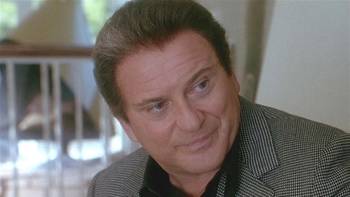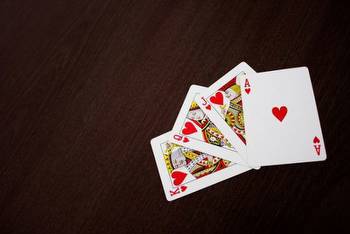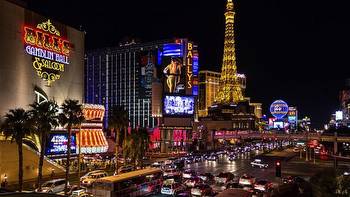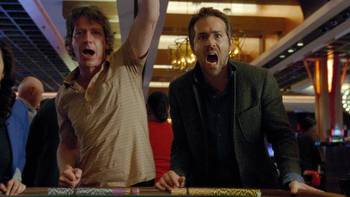Las Vegas Was Built By a Gambling, Commie-Hating Real Estate Developer, Not a Gangster

Las Vegas is a place of legend. The city went from a dusty town in the middle of the desert where workers from the nearby Hoover Dam could spend their hard earned wages to an international tourist hotspot in only a few decades. As legend has it the town was the brainchild of an East Coast mobster, Benjamin “Bugsy” Siegel , who was trying to reinvent himself as a legitimate businessman. That legend was solidified thanks to the 1991 Oscar winning film Bugsy, in which Warren Beatty played the complicated but lovable hitman.
The film got rave reviews but one of the people that watched it took issue with its accuracy. That person was W.R. Wilkerson III. He knew first hand that claiming that Bugsy Seigel was the founder of Las Vegas was nothing more than Hollywood dramatization because his father, W.R. “Billy” Wilkerson was really the person who should be credited with the development of the gambling capital of the country. “After watching the movie I came out realizing it was a brilliant feature film, but historically, completely inaccurate,” Wilkerson said. “After the Academy awards ceremony in March 1992 I decided I would sit down and write the entire story and really explore every angle.”
So he wrote a book about a book called The Man Who Invented Las Vegas in order to set the record straight. This honest description of the events that led to the creation of the Las Vegas strip as we know it today shows how one flawed person was behind what we now know as Sin City.
Billy Wilkerson grew up around gambling. His father, Richard, is said to have won a Coca Cola concession franchise in a poker game. He then proceeded to trade the franchise for a movie theater and then sold the theater and lost the cash in a poker game. All of this happened within a period of two weeks. Billy was a good student and got into medical school in Philadelphia but was more interested in gambling at the local horse track than studying. When Richard died and left his wife with substantial gambling debt Billy dropped out of school to help pay it off.
To earn his money Billy looked to the newly founded film industry. He moved to Hollywood and began publishing one of the industry’s first tabloids, The Hollywood Reporter, in 1930. For over 30 years Wilkerson II published the magazine and wrote an op-ed section for every edition called “Tradewinds.” It was in this long standing column that Billy was able to gain influence on the industry by spreading gossip about movie stars, producers, and directors. He even created a list of communist sympathizers in the industry called “Billy’s List” that is credited for fanning the flames of the ‘Red Scare’ that went through the country post WWII.
Billy also used his place in the industry to create an entertainment real estate empire. He developed and owned many of the most famous clubs on Sunset Strip that owed much of their popularity to regular visits from the Hollywood elite. But even that was not enough to support his gambling habit. He reportedly lost thousands of dollars every week and in the first six months of 1944 alone he lost almost $1 million. Finally a friend, 20th Century Fox Chairman Joe Schenck, convinced him that if he was going to gamble, he needed to own a casino.
Billy took this advice and he found his opportunity in the small town of Las Vegas. In January, 1945, Wilkerson bought 33 acres of land a few miles from downtown Las Vegas for $84,000. He figured that most other casinos would not perceive his casino outside of town as competition. Rather than just mimic the cowboy theme that most casinos of the time had adopted, Wilkerson wanted something that better satisfied his European tastes. He envisioned creating the largest, most sophisticated resort in Las Vegas, one that was five stories tall and had 250 rooms. It would be a hallmark of sophistication, geared toward the elite who would wear evening clothes at night and gamble away fortunes surrounded by luxury.
Wilkerson hated the desert, but he knew about captive audiences. He figured that “the middle of nowhere” was an ideal location for a casino since gamblers would have no sightseeing distractions. He also envisioned the casino as the hub of activity. To this day you can go anywhere in a Las Vegas resort without passing through the gambling floor. He also was the one who first came up with the idea that casinos should have no windows and no clocks, so gamblers like himself would lose track of time amidst the games.
This betting paradise that Wikerson envisioned eventually became the iconic Flamingo hotel and casino. But even before construction began, Wilkerson’s gambling habit had put the project in jeopardy. $1.2 million was needed for the project but, even after a number of bank loans, Wilkerson came up about $400,000 short. So, he then decided to do what any gambling addict would, to see if he could win the money playing poker. He failed. So, he had to look for funding wherever he could, which eventually came from the gangster G. Harry Rothberg who bought two thirds of the project for $1 million.
It is only at this point that the famous hitman Bugsy Seigel comes in. He was sent to keep an eye on the project by the mob bosses but eventually muscled Wikerson completely out of the day to day operations and caused the project to run $6 million over budget. Eventually Wilkerson sold his stake in the underwater development and Seigel was gunned down outside of his girlfriend’s apartment.
It is hard to feel too sorry for Wilkerson, who’s gambling ruined his career and quest against communism ruined countless others. Even after the financial setbacks he likely died a wealthy man. But it is hard not to think that he didn’t get the credit that is due when it comes to the history of Las Vegas. The over the top spectacle that Las Vegas has become is not the product of a gangster trying to be legitimate. The 24 hour mecca to gambling that Las Vegas has become could only be conceived by someone like Billy Wilkerson, who developed a casino just to satiate his gambling habit.





































